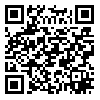Volume 15, Issue 1 (8-2025)
Clin Exc 2025, 15(1): 41-58 |
Back to browse issues page
Download citation:
BibTeX | RIS | EndNote | Medlars | ProCite | Reference Manager | RefWorks
Send citation to:



BibTeX | RIS | EndNote | Medlars | ProCite | Reference Manager | RefWorks
Send citation to:
Alishah F, Jafari H, Araghian F. A Review of the Application of Benson Relaxation Technique in Hemodialysis Patients in Iran. Clin Exc 2025; 15 (1) :41-58
URL: http://ce.mazums.ac.ir/article-1-871-en.html
URL: http://ce.mazums.ac.ir/article-1-871-en.html
Traditional and Complementary Medicine Research Center, Mazandaran University of Medical Sciences, Sari, Iran.
Abstract: (809 Views)
Background and purpose: Hemodialysis, despite its benefits, can present patients with various problems and complications. There is an increasing tendency among patients toward non-pharmacological interventions that can be cost-effective. Patients undergoing hemodialysis have expressed their preference for non-drug therapies, such as the Benson Relaxation Technique (BRT). The present study aimed to review the application of BRT in hemodialysis patients in Iran. It is hoped that the results of this study will assist nurses in the use of this safe and cost-effective method.
Materials and Methods: This study was conducted as a narrative review. In the present study, Persian studies were searched in Persian-language databases, such as Magiran and SID, using the following keywords: "Benson relaxation," "dialysis," "hemodialysis," and "patients" from 2010 to 2024. For searching English studies, keywords, such as "Benson relaxation," "hemodialysis," and "patient," were used in databases, such asd PubMed and Scopus. An advanced search was also conducted on Google Scholar in both Persian and English. The inclusion criteria entailed full-text articles in Persian and English that were conducted in Iran, while the exclusion criteria included a lack of access to full articles. Review articles were also excluded from the study.
Results: A total of 14 articles were included in the study. The review of studies demonstrated that most studies (n=11) were clinical trials. Most of the retrieved studies addressed the impact of BRT on anxiety, stress, and depression. BRT was used on variables, such as depression, anxiety, stress, quality of sleep, quality of life, fatigue levels, physical activity, self-efficacy, nausea and dialysis adequacy, and pain in hemodialysis patients. All studies indicated a positive impact of BRT on the examined variables.
Conclusion: Given that BRT displayed a positive effect on most problems faced by hemodialysis patients, it is recommended that hospital management and treatment centers work towards implementing this method for patients and include its training in nursing students' curricula and continuous education for nurses.
Materials and Methods: This study was conducted as a narrative review. In the present study, Persian studies were searched in Persian-language databases, such as Magiran and SID, using the following keywords: "Benson relaxation," "dialysis," "hemodialysis," and "patients" from 2010 to 2024. For searching English studies, keywords, such as "Benson relaxation," "hemodialysis," and "patient," were used in databases, such asd PubMed and Scopus. An advanced search was also conducted on Google Scholar in both Persian and English. The inclusion criteria entailed full-text articles in Persian and English that were conducted in Iran, while the exclusion criteria included a lack of access to full articles. Review articles were also excluded from the study.
Results: A total of 14 articles were included in the study. The review of studies demonstrated that most studies (n=11) were clinical trials. Most of the retrieved studies addressed the impact of BRT on anxiety, stress, and depression. BRT was used on variables, such as depression, anxiety, stress, quality of sleep, quality of life, fatigue levels, physical activity, self-efficacy, nausea and dialysis adequacy, and pain in hemodialysis patients. All studies indicated a positive impact of BRT on the examined variables.
Conclusion: Given that BRT displayed a positive effect on most problems faced by hemodialysis patients, it is recommended that hospital management and treatment centers work towards implementing this method for patients and include its training in nursing students' curricula and continuous education for nurses.
Type of Study: Review |
Subject:
پرستاری
Received: 2024/11/22 | Accepted: 2025/08/4 | Published: 2025/08/4
Received: 2024/11/22 | Accepted: 2025/08/4 | Published: 2025/08/4
Send email to the article author
| Rights and permissions | |
 |
This work is licensed under a Creative Commons Attribution-NonCommercial 4.0 International License. |






